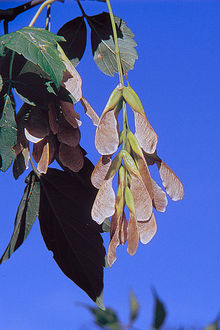For decades, hundreds of horses in North America and northern Europe have died from a pasture-associated muscle disease whose cause, prevention, and treatment have remained elusive.

Box Elder tree seeds - Deadly for horses
Break through research from the University of Minnesota has now identified seeds from the box elder tree, and possibly other Acer species trees, as the cause of Seasonal Pasture Myopathy in North America and likely Europe.
Even with early diagnosis, the fatality rate for this disease, known as Seasonal Pasture Myopathy (SPM) in North America and Atypical Myopathy (AM) in Europe, is between 75 and 95%.
According to Anna Reinier, DVM, PhD, breakthrough research from the University of Minnesota has now identified seeds from the box elder tree, and possibly other Acer species trees, as the cause of SPM in North America and likely Europe.
Characteristic signs of SPM include stiffness, difficulty walking or standing, dark urine and eventually breathing rapidly and become recumbent. The disease can be easily confused with colic or founder, and its cause has evaded clinicians and researchers until now.
SPM occurs most often in the fall with fewer numbers of affected horses seen in the spring and summer. It is typically not seen when snow is present. Horses do not naturally eat box elder seeds but if horses are pastured for over 12 hours a day on sparse, wooded pastures without being fed supplemental hay they may eat box elder seeds, especially if windy conditions or rain knock down seeds. The presence of numerous box elder seeds on pastures is the final key risk factor for SPM.
In North America, box elder trees are found in Canada, the midwestern and northeastern USA, south to northern Florida, and west through Texas. They are seen as a non-native tree species in Europe as well. The Minnesota study found the toxin hypoglycin A in the seeds of box elder trees and high concentrations of hypoglycin A's toxic metabolites in blood and urine from SPM-affected horses.
These findings demonstrate that horses with SPM have ingested box elder seeds containing the toxin hypoglycin A. If horses eat sufficient quantities of box elder seeds, the toxin blocks fat metabolism and breaks down their respiratory and postural muscle cells sometimes affecting heart muscle.
When one horse becomes affected, herd mates are also at risk due to the presence of seeds on pastures. However, not every horse on a pasture with box elder seeds will develop the disease. In fact, there are many horses on pastures with box elder trees that have remained health for years. This may be because the horses have other preferred sources of feed and do not consume box elder seeds, or because toxin levels in seeds on those pastures are very low.
If you suspect that your horse may be affected by SPM, rapid diagnosis and treatment are essential to your horse's survival. Contact your veterinarian promptly if your horse demonstrates any of the above signs. Aggressive medical therapy is warranted in any case that is confirmed or suspected to have SPM; hospitalized care provides the best odds for survival. Blood tests that detect muscle damage and hypoglycin A toxin levels in your horse are available through the University of Minnesota and can help determine if your horse has SPM.
As treating SPM can be very difficult, preventing the disease is very important. Simple management changes for horses on pastures where box elder trees are present can be made to reduce your horses' risk of SPM.
- Preventing overgrazing of pastures through pasture rotation or providing hay to horses on over grazed pastures can reduce a horses' desire to eat weeds and seeds.
- If horses are turned out in an area with box elder trees, it may be prudent to limit their turn out to less than 12 hours each day during high risk periods, such as in the fall, during a drought, or after heavy wind or rain events.
- It is recommended that horses not be introduced to a new pastures with box elders immediately prior to or during high risk periods.
- Trimming low-hanging box elder tree branches or removing trees when possible will help to reduce a pasture's seed burden.
Assessing your pastures and horses' potential for toxin exposure can be done at any time, even prior to the development of any cases of SPM. More detailed information on minimizing your horse's risk of SPM and on recognizing and treating SPM is available on the University of Minnesota's SPM website.
If you think your horse has experienced, or is experiencing SPM, please contact your veterinarian and complete the SPM Risk Assessment Survey and a University veterinarian will contact you promptly regarding your concerns and possible testing of blood samples from your horse for hypoglycin A toxicity.
We are more prepared than ever before to prevent and recognize SPM, and ongoing research will continue to expand our diagnostic and therapeutic options for this disease.
By Anna Renier, DVM, University of Minnesota, DVM, PhD, University of Minnesota
